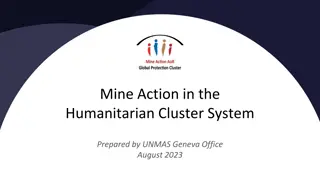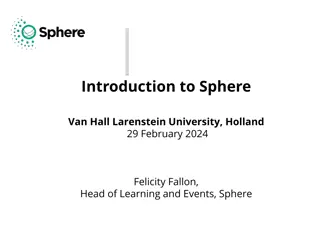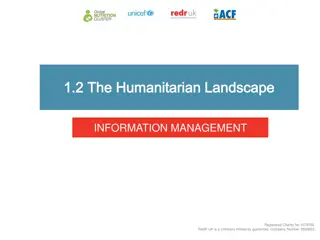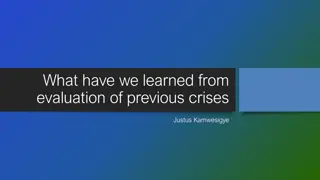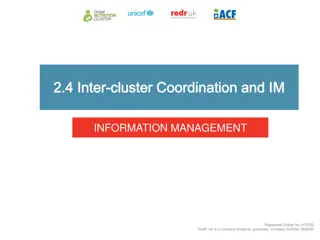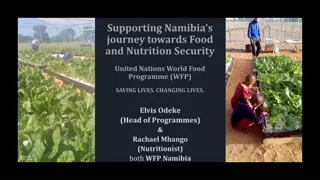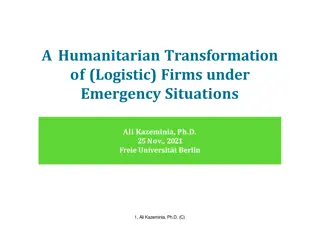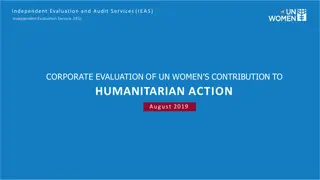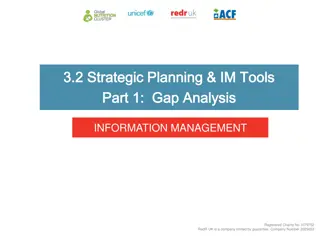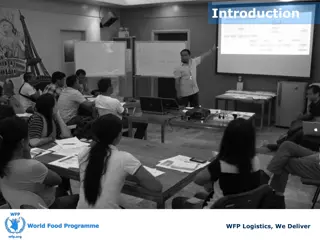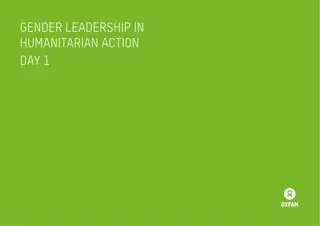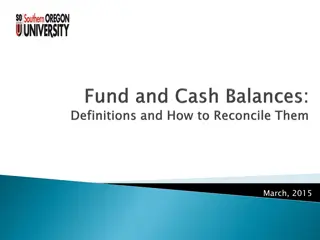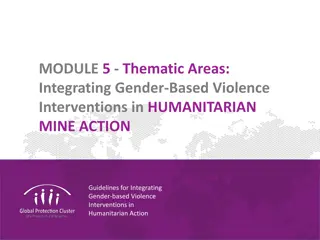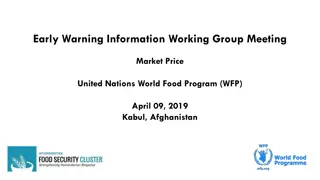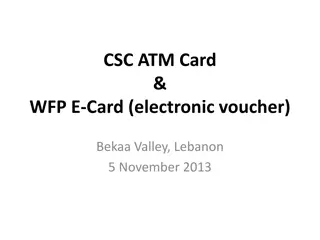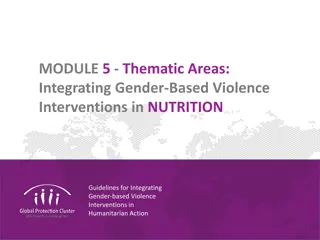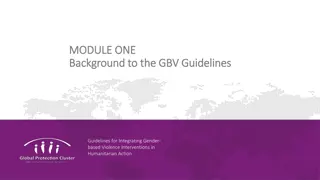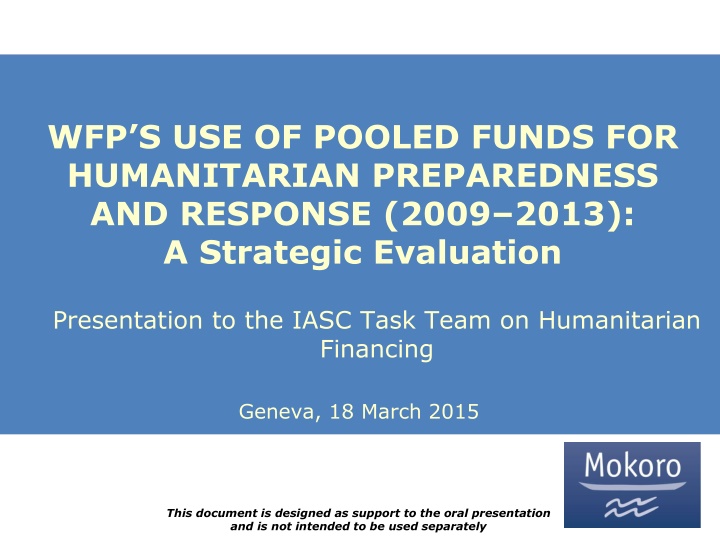
Evaluation of WFP's Use of Pooled Funds for Humanitarian Response
This strategic evaluation presentation assesses the effectiveness of the World Food Programme's use of pooled funds for humanitarian preparedness and response from 2009 to 2013. It discusses contributions, operational grants, evaluation issues, findings, conclusions, purpose, utilization, additionality, and timeliness. The document highlights the varying types of funding, challenges faced, and the need for complementary instruments beyond life-saving activities to enhance resilience and assistance.
Download Presentation

Please find below an Image/Link to download the presentation.
The content on the website is provided AS IS for your information and personal use only. It may not be sold, licensed, or shared on other websites without obtaining consent from the author. If you encounter any issues during the download, it is possible that the publisher has removed the file from their server.
You are allowed to download the files provided on this website for personal or commercial use, subject to the condition that they are used lawfully. All files are the property of their respective owners.
The content on the website is provided AS IS for your information and personal use only. It may not be sold, licensed, or shared on other websites without obtaining consent from the author.
E N D
Presentation Transcript
WFPS USE OF POOLED FUNDS FOR HUMANITARIAN PREPAREDNESS AND RESPONSE (2009 2013): A Strategic Evaluation Presentation to the IASC Task Team on Humanitarian Financing Geneva, 18 March 2015 This document is designed as support to the oral presentation and is not intended to be used separately
WFP Global Use of PFs Pooled fund contributions 2009 2013 US$ millions
217 operations and 462 grants EMOPS (4.3%) PRROs (4.2%) SOs (16.2%)
Evaluation Issues Contribution and added value to WFP s emergency response Complementarities among PFs and with other WFP instruments Partnerships and coordination effects Factors affecting WFP s use of PFs
Purpose Pressure to expand the objectives of the use of PFs beyond life saving PFs are: Limited and insufficient for primary objective Adapted to funding immediate life-saving activities Funding preparedness, resilience building and social assistance better met through complementary funding instruments
Utilization In-kind food assistance but a relatively modest proportion Cash and nutrition activities Common services (UNHAS operations, common logistics services and pipelines, and shared operational hubs) but not on-going operating costs of common services Contribution by PF type to type of WFP operation ERF EMOP CHF PRRO SO CERF 0% 10% 20% 30% 40% 50% 60% 70% 80% 90% 100%
Additionality The introduction of PFs has not been associated with a fall in multi-lateral funding Trends in all contributions to WFP from Top 12 CERF Donors 2002 2013 (USD millions) 1,800 1,600 1,400 1,200 Directed Multilateral 1,000 CERF 800 Undirected Multilateral 600 400 200 - 2002 2003 2004 2005 2006 2007 2008 2009 2010 2011 2012 2013
Timeliness CERF RR is widely perceived to support a timely response by WFP Typically available faster than other directed multi-lateral contributions Period elapsed CERF (avg) All donors (avg) From crisis event to release of funds 55 days 81 days From release of EMOP to receipt of funds 5 days 37 days
Average Days between IR-EMOP Approval and Date for Exchange of First Contribution 180 152 160 140 122 114 113 120 99 93 100 90 89 79 78 75 74 72 80 65 62 59 55 60 35 40 13 20 11 0
Timeliness Step Task Responsibility 1 Formulation of request to CERF Secretariat HC/HCT 2 Revision/ approval of CERF envelope CERF Secretariat 3 Allocation of CERF envelope amongst UN agencies CERF disburse the money to UN agencies on the basis of a Letter of Understanding (LoU) HC/HCT 4 CERF Secretariat 5 UN agencies transfer funds to their field offices UN Agencies
Timeliness Internal advances critical to WFP s immediate ability to respond Flexibility and predictability of PFs reinforcing use of Internal Advances PFs (unlike many donors) permit revolvement of advances L3 protocols for CERF RR mobilization PFs foundation for scale-up through directed multi-lateral contributions Avg. value of PF Grants and Internal Advances per Operation (US$ millions) 18 16 14 12 10 8 6 4 2 0 WCFF IRA CERF CHF ERF
Timeliness of Disbursement to Cooperating Partners A significant lag is reported between funds becoming available and the contracting of CPs (CERF RR = 50 days, CERF UF = 71) WFP systems not linked to use of individual grants Not equivalent to delay in response NGOs most concerned with delays in reimbursement of expenditure 13
Coordination PFs reinforce coordination structures, but don t solve the challenges of weak or absent systems WFP increasingly engaging with coordinated strategy development and project appraisal Not generally resulted in observable changes in WFP s strategic or operational approach
Accountability PF managers seeking accountability for PF grants Transaction costs for WFP estimated at $5,000 at CO levels and $3,200 at HQ level Potential increases associated with new reporting requirements Impact?
General Recommendations Maintain and strengthen the life-saving focus of PFs Reduce earmarking Improve the targeting of CERF UF grants Maintain and increase the capacity to utilize PFs as collateral for the release of internal advances
General Recommendations Enhance the contribution of PFs in supporting the operation of common services in emergencies Consolidate fulfillment of WFP s coordination responsibilities to improve support for effective use of PFs Define strategic and operational responsibilities for using and reporting on PFs at all levels Strengthen the quality, efficiency and utility of monitoring and reporting on the use of PFs

